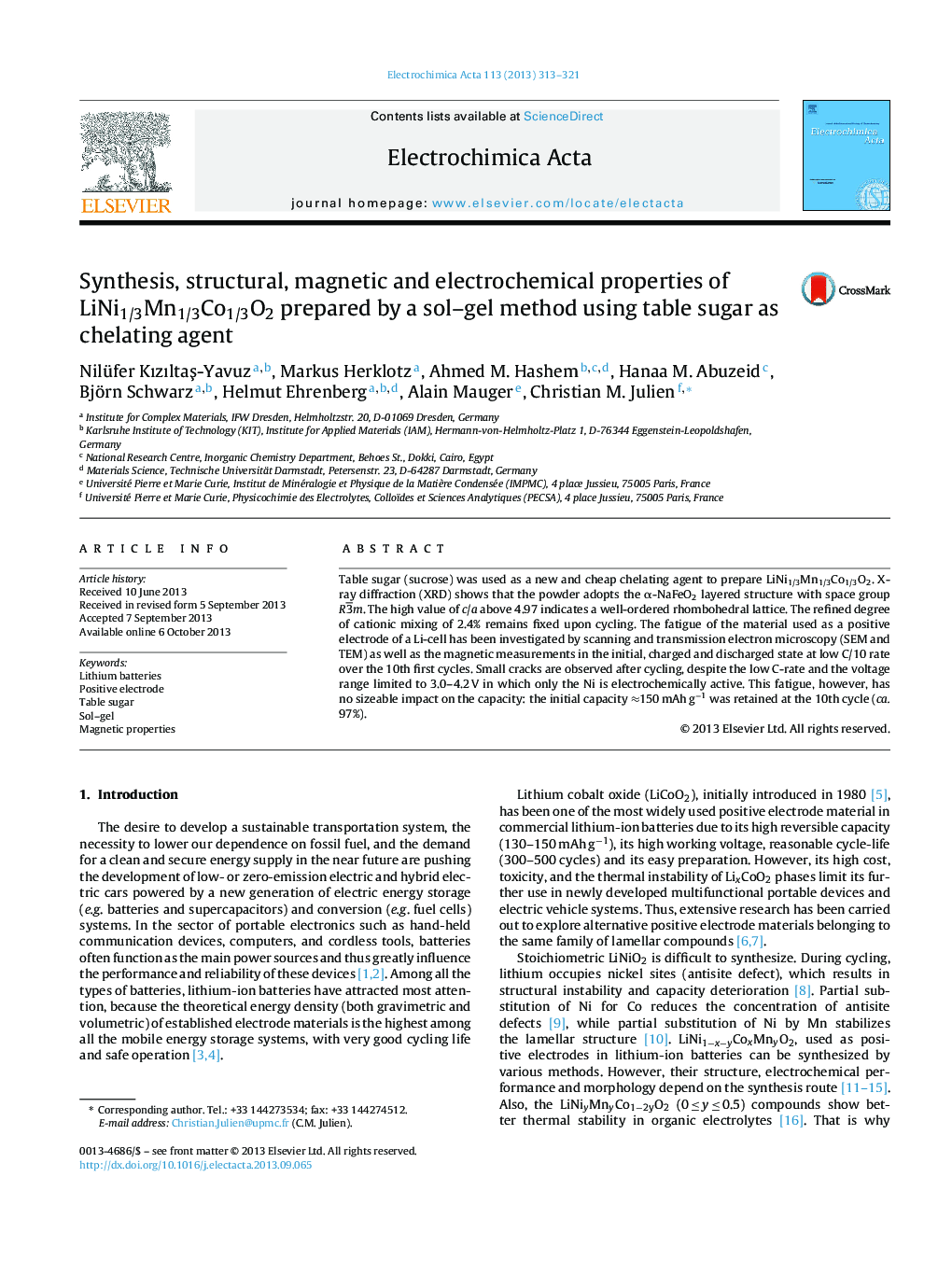| Article ID | Journal | Published Year | Pages | File Type |
|---|---|---|---|---|
| 6614748 | Electrochimica Acta | 2013 | 9 Pages |
Abstract
Table sugar (sucrose) was used as a new and cheap chelating agent to prepare LiNi1/3Mn1/3Co1/3O2. X-ray diffraction (XRD) shows that the powder adopts the α-NaFeO2 layered structure with space group R3¯m. The high value of c/a above 4.97 indicates a well-ordered rhombohedral lattice. The refined degree of cationic mixing of 2.4% remains fixed upon cycling. The fatigue of the material used as a positive electrode of a Li-cell has been investigated by scanning and transmission electron microscopy (SEM and TEM) as well as the magnetic measurements in the initial, charged and discharged state at low C/10 rate over the 10th first cycles. Small cracks are observed after cycling, despite the low C-rate and the voltage range limited to 3.0-4.2 V in which only the Ni is electrochemically active. This fatigue, however, has no sizeable impact on the capacity: the initial capacity â150 mAh gâ1 was retained at the 10th cycle (ca. 97%).
Related Topics
Physical Sciences and Engineering
Chemical Engineering
Chemical Engineering (General)
Authors
Nilüfer KızıltaÅ-Yavuz, Markus Herklotz, Ahmed M. Hashem, Hanaa M. Abuzeid, Björn Schwarz, Helmut Ehrenberg, Alain Mauger, Christian M. Julien,
